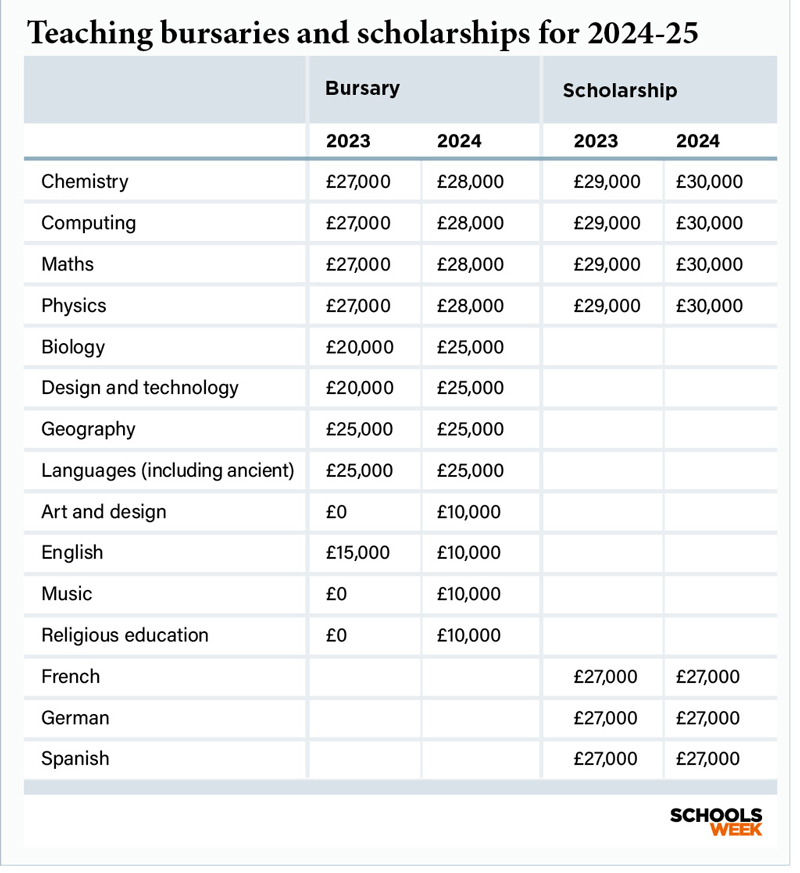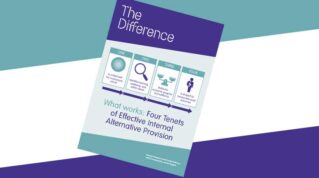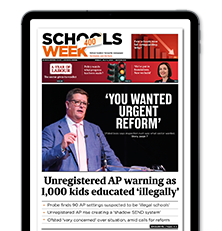The Department for Education will increase teaching incentives in most subjects next year, but its spend on getting more trainees into the classroom remains far behind pre-pandemic levels.
Overall spending on teacher incentives in 2024-25 will rise to £196 million, up from £181 million this year. However, this is still £54 million less than the £250 million spent in 2020.
Incentives were heavily slashed when Covid prompted a spike in interest in teaching, which turned out to be shortlived.
The government missed its secondary recruitment targets by 40 per cent last year, and is expected to miss them by around half this year.
Ministers announced today that bursaries in maths, physics, chemistry and computing will rise by 3.7 per cent from £27,000 this year to £28,000 in 2024-25.
Bursaries in geography and design and technology will rise by 25 per cent, from £20,000 to £25,000.
Geography and languages bursaries will remain the same at £25,000, and the government will re-introduce £10,000 bursaries in art and design, music and religious education.
However, the bursary for English trainees will fall from £15,000 to £10,000.
Scholarships in maths, physics, chemistry and computing teachers will rise by 3.4 per cent from £29,000 to £30,000. They will remain at £27,000 in French, German and Spanish.
‘Like filling a bath without a plug’
The National Association of School-Based Teacher Trainers welcomed new bursaries, but its executive director Emma Hollis said there would be “concern in the sector” that primary teachers were not eligible.
Education secretary Gillian Keegan said teachers were “key to the success” of the prime minister’s recent announcement of a new qualification for sixth formers.
“That’s why we need the best and the brightest teaching throughout our schools. These bursaries give trainee teachers even more choice and support to help them start their journey into the classroom.”
But Ian Hartwright, head of policy at school leaders’ union NAHT, said the proposals “follow a well-worn path which has failed to deliver”.
“It’s like filling a bath without a plug to keep the water in. Almost 44,000 teachers left the profession last year and retention rates for new recruits after their first year teaching actually fell.
“Without a far more ambitious and comprehensive approach from the government, school leaders will continue to struggle to ensure all children have the teachers they need to flourish.”
Here are the changes…

















Your thoughts